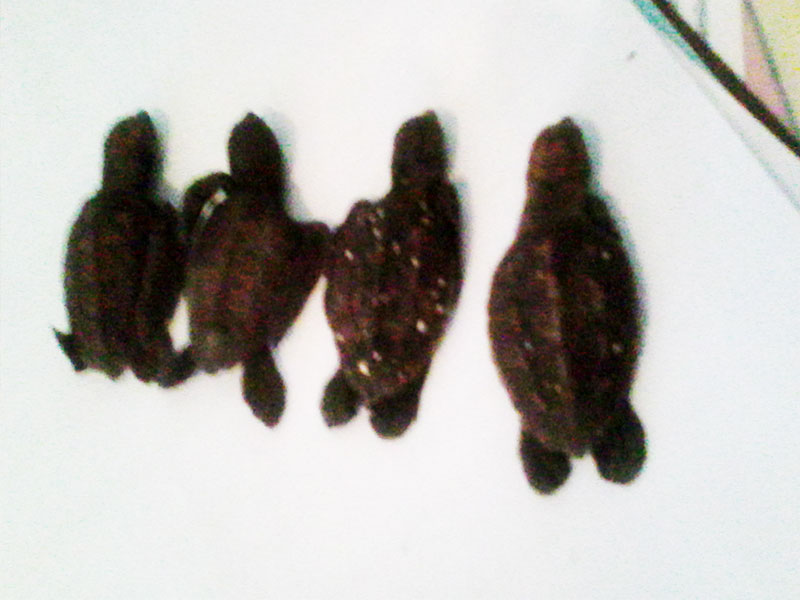The Department of Fisheries with USP has been seeking the assistance of MES in collecting genetic materials during turtles hatching season from unborn embryo and dead embryo – a national priority in determining the stock structure and migratory pattern of turtles in Fiji.
The genetic project is the first done in Fiji and will have great implication in the conservation and management of the turtle population with data collected shared with our resort and community stakeholders. The project started in December 2014 and will go on into the 2015 nesting season and it is funded by University of the South Pacific, US National Oceanic and Atmospheric Administration (NOAA), South Pacific Regional Environment Program (SPREP) and British Chelonic Group
Mapping of significant nesting sites was also developed during the community and resort consultation and has been an integral tool during the biological survey. Identified during the survey were 13 nesting sites and 12 feeding grounds. Seven nesting sites were confirmed during the survey while the others were visited by nesters but no nests were found and the number of eggs laid ranged from 64 – 154 in each nest.
Project Leader, Dr Susanna Pivanno visited MES on the 16th of April to collect dead hatchling and unborn embryos samples which was found from respective nesting sites. Samples were from Mana Island, Vomo Island and South Sea Island. Out of 64 eggs that were laid in Mana, 32 eggs hatched successfully , 29 were still un – hatched while 3 were found pimped; From south sea island who recorded the highest survival rate of 132 hatched eggs out of 133 eggs laid whereas for Vomo Island, the team managed to collect 4 dead hatchlings and 4 dead embryos. Dr Pivanno stated that MES will benefit from this project as it will be acknowledged as a contributor to sampling in every publication and reports that will be written for the project.
MES hopes to enlist full support and contribution for these sea turtle project that will benefit the nation in filling in the missing gap that we have on genetic assessment of Fiji turtle population.


